Soon
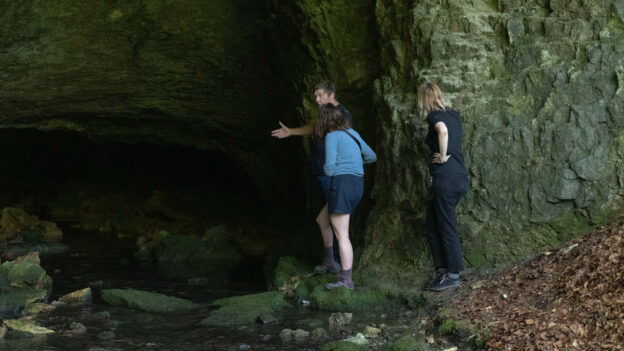

Soon
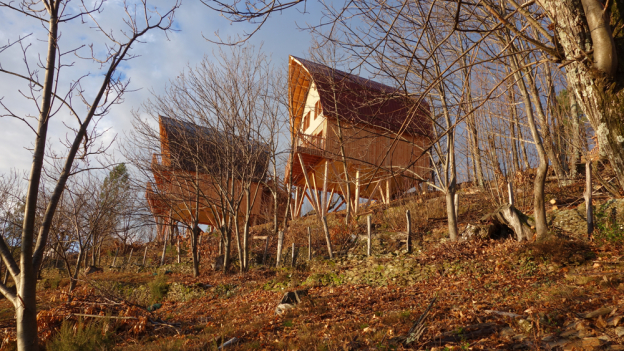
Rural Social Housing in the Ardèche Cévennes
The Drobie valley, like the whole of the Ardèche area, has undergone a slow process of agricultural abandonment for more than a century, its steep slopes being too restrictive for mechanized agriculture. This change engendered a major rural exodus that reached its peak in the 1970’s. Recently, the valley has experienced new residential and tourist interest, which has created numerous amenities, not always adapted to the challenges of local development.
The Beaumont commune has embarked on construction and development projects to support sustainable development in the face of growing demand for building land or traditional housing. The Blat hamlet was chosen to accommodate a new residential zone and the commune entrusted an architect with the project of creating a rural social habitat based on the house as a basic unit, all the while giving the opportunity to the hamlet’s social group.
The Construire team’s response made it possible to go further than initial intentions, to open up the commission to their experimental approach and to question the possibility of different ways of building. Entrepeneurs, future residents, architects and artists were consulted throughout the project in order to make the construction a cultural act.
Each house is located astride several restanques[1] and is served by a private road, but parking spaces are grouped together and kept away from the dwellings. The faïsses[2] that are not privately owned may be used for common gardens.
Initial construction consists of an arched frame, its cladding and the layout of the ground floor alone (with living room, bedroom, kitchen and bathroom). After that, two options are possible: simple rental with the possibility, among others, for the tenant to extend the living area into spaces left free; or progressive acquisition of the property as part of a set-up defined with the client.
[1] Restanque is a term used for drystone retaining walls built on steep slopes to establish cultivating terrasses.
[2] Land in strips used for agriculture on steep slopes long deforested.
First batch of 3 houses and 4 dwellings/ lodgings: September 2013
Second batch of 3 houses: January 2017
Patrons: Members of Beaumont’s municipal council and Pascal Waldschmidt, mayor of Beaumont, Jacqueling Nielle and Jean-Remi Durand-Gasselin, mayoral deputies.
Funding: Fondation de France, Rhône-Alpes region, General Council of Ardèche (Cap Territoire), Monts d’Ardèche Regional Nature Park (European Agricultural Fund for Rural Development – Leader.)
+ book link:
The Bogues de Blat experiment was the subject of a publication including the story of the commission and Patrick Bouchain’s study book. Captures éditions, 2018
presentation folder, September 2013 – pdf pdf
crédits photographiques Loïc Julienne et Phoebé Meyer
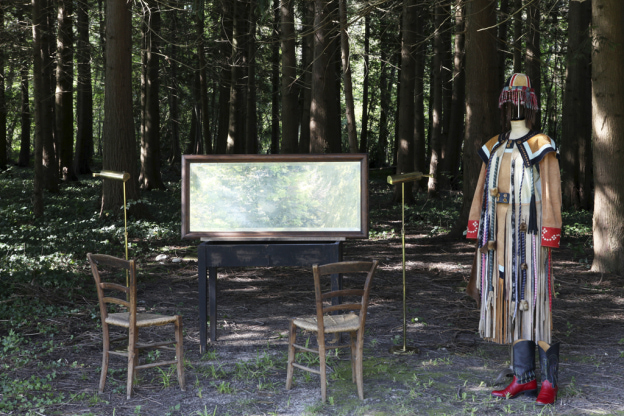
Commissioned within the framework of the inter-parks cooperation project Paysage Industriel (Industrial Landscape): Monts d’Ardèche, Lorraine, Pilat, Vercors
The 72 593th Part of the world
Traditional crafts hold an important place in Royans-Vercors’ history. The production of wooden tableware especially, boomed during the second half of the XXth century, with some fifty companies employing more than six hundred workers. Today only four workshops are in operation. The work requested here must draw on the threads of the past to think of the future and account for the territory’s plural realities.
Straight away, Michel Aubry chooses to decompartmentalize his subject and associate the Vercors project with the one taking place in parallel at the Pilat park. His research is based on three works that evoke the industrial landscape and the relationship with natural resources: Paysage avec travaux de la mine (1544) (Landscape with mine work) by Herri met de Bles, Le Feu (1606) (The Fire) by Jan Breughel the Elder and La Sixième Partie du monde (1927) (A 6th Part of the World) by filmmaker Dziga Vertov.
Michel Aubry’s proposal for the Vercors park is inspired by a sequence from La Sixième Partie du monde showing a Siberian shaman who dances “in a costume laden with symbolic objects, both protection and a conductive jacket linked to natural elements.” He rethinks the shaman’s costume and associates it with the sound tubes designed in the turnery tradition. “Like the shaman, sound connects elements coming from the forest to material objects.”
On the 27th September 2014, Marianne Baillot initiated the work with a choreographic performance.
Today The 72 593th Part of the World is part of the Conservation of the Drôme Department collection and is on permanent display in the municipal council room of Saint-Jean-en-Royans. Other variations of the dance are scheduled for the Vercors region.
Press release, September 2014- pdf
Patrons: Members of the Arbre and Engivane associations and the Vercors Regional Nature Park
Funding: Fondation de France/ New Patrons programme, Vercors Regional Nature Park, European Agricultural Fund for Rural Development: LEADER, Department of Drôme, the town of Saint-Jean-en-Royans
2014
crédits photographiques Phoebé Meyer
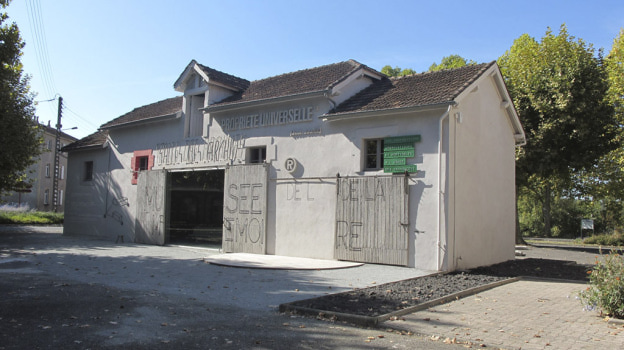
Before it was a mining town in the 19th century, Cransac was a village known for its hydrotherapy. After the mines closed in 1961, the city became a spa town again, but collective memory remains tied to its mining past. Changes in landscape and social behaviour are thus essential ideas in Cransac’s recent history.
By using an artist, the patron wanted to go further than commemoration. If the consideration of industrial and mining history remains important, the articulation of past and present must show new concerns related to thermal activity and the evolution of the urban landscape.
The town chose internationally renowned artist, Joëlle Tuerlinckx. From the outset, she became interested in the context of the intervention. Her meetings and discoveries (human, geological, architectural) were recorded in notes and are the subject of audio and visual recordings, the ensemble constituting the genesis of the work.
Joëlle Tuerlinckx develops a project that evokes the entire museum structure and its function: the collection, conservation, inventory, presenting successive exhibitions. But she overturns its schemes and proposes a “museum turned inside out like a glove” based on a triangular of places.
The Cransac Triangular, “Memory Museum – Universal Property ®” consists of the Memory Monument, 34 metres high, erected on the old mine pit head, near shaft No. 1 (the monument represents one 10th of the shaft’s depth) and of two sites designated by the artist as the Memory Museum Vitrine Historique and Vitrine Contemporaine (Historic Window and Contemporary Window).
The title given to the work pays homage to Jean Jaurès: “Universal education, universal suffrage, universal property, that is, if I may say, the true postulate of the human individual.*” The artist retains the universal spirit and utopian dimension of Jaurès’ words.
*“Socialism and freedom” article published in La Revue de Paris, December 1st, 1898.
Press folder, September 2011- pdf
‘Monument-Mémoire’, ‘Vitrine Contemporaine’ et ‘Vitrine Historique’
réalisation et inauguration, le 15 octobre 2011
Patrons: Cransac Municipal Council
Financial Partners: Town of Cransac-Les-Thermes, Fondation de France New Patrons in partnership with the Minister of Culture and Communication (DGCA, DRAC Midi-Pyrénées), Région Midi-Pyrénées, Department of Aveyron, with the participation of Bassin de Decazeville-Aubin Communauté de communes, Forum des associations, Crédit agricole Nord Midi-Pyrénées, Umicore, Chaîne thermale du Soleil–Thermes de Cransac
2011
)Photographic credits, Joëlle Tuerlinckx, Christoph Fink (except 25, 26 and 27)
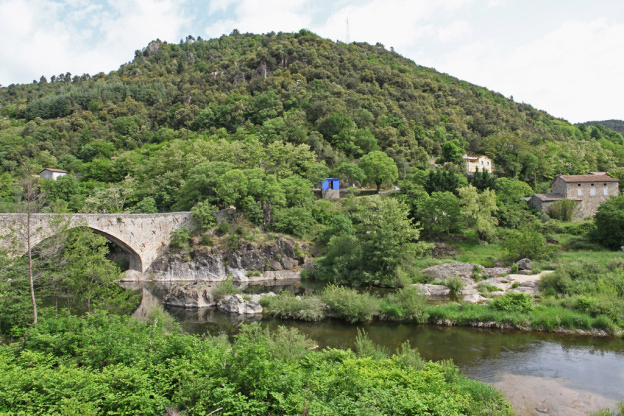
You Will Tell Me is Élisabeth Ballet’s response to a commission awarded by elected officials and residents of the former Eyrieux-aux-Serres Community of Communes and the Monts d’Ardèche Regional Nature Park. Today this region, located in the middle range mountain zone, has more than twenty abandoned milling and weaving workshops and the question of their reclassification is recurrent. The Community of Communes wished to reflect on the presence and transformation of this industrial landscape and to address the social dimension of textile work.
In Saint-Sauveur-de-Montagut, the presence of the Moulinon on the banks of the River Eyrieux is strong evidence of local working history. Élisabeth Ballet created a “listening chamber” in the old station stop across the river opposite the old mill. This shelter is painted blue and is preceded by a terrace equipped with two red-brown concrete benches. Inside, a window fitted with a railing was broken open to offer a frontal view of the Moulinon. An audio montage is broadcast in various places to multiply listening points.
“The distance between the factory that we will admire and the site itself,” writes the artist, “will allow the creation of an intangible work.” In the listening chamber, the sounds of the river, the turbine and of nature mingle with noises of machines and voices of factory workers. “These voices invite us to take time to listen to stories of work accomplished here – its price, its joys and sorrows – and thus learn about the workers’ skills.”
Patrons: elected officials and residents of the former Eyrieux-aux-Serres Community of Communes and the Monts d’Ardèche Regional Nature Park.
Funding: Monts d’Ardèche Regional Nature Park as part of the European LEADER programme (European Agricultural Fund for Rural Development), Fondation de France / New Patrons, Rhône-Alpes Region, former Community of Communes Privas Centre Ardèche.
2014
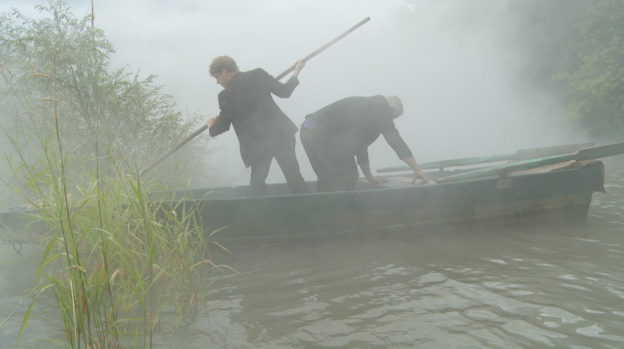
The Isère and the Work:
The communes on the left bank of the Isère river are situated within Grenoble’s urban expansion and on the historic route linking the Alps to the Mediterranean. Real estate pressure due to proximity to the Grenoble agglomeration and the grouping of communes into communities made these villages reposition themselves in order to preserve their specificities.
In the context of the region’s growing urbanisation, the old industrial sites are part of common imagination in connection with local working class history forged over several generations. Susanne Bürner was invited to take note of this observation. Two emblematic sites were located – the old royal Saint-Gervais canon foundry and the Echaillon quarries.
Susanne Bürner did not want to limit her research to the history of the two communes however, she immersed herself in local geography, visited many sites and collected stories as well as rich iconography on the industrial history of the two banks of the Isère. During the course of her reflections, the river’s role appeared strategic – it facilitated the circulation of goods, people and labour with bridges, boats, rafts and traps. Its strong presence at the foot of the Vercors hills always impresses the traveller. It is also through the eyes of a foreigner, in this case a young boatman, that Susanne Bürner presents fiction in the form of a film, The Crossing. The publication of two leperellos, L’Isère and Le Travail, (The Isère and The Work), combine images, archival drawings and the artist’s own photographs.
invitation, Decembre 2014 – pdf
La Traversée
L’Isère and Le Travail (The Isère and The Work)
Artist’s edition, 600 examples
Width of leperello when opened out: 104 x 10.4cm
10 euros for the set
Patrons: Saint-Gervais Commune represented by Madame Faure, the mayor, members of the SPIA association – Sauvegarde du patrimoine industriel d’autrefois (Safeguarding the Industrial Heritage of Yesteryear) and the Vercors Regional Nature Park
Funding: Vercors Regional Nature Park within the Framework of the European LEADER programme (Fonds européen agricole pour le Développement rural), Fondation de France / New Patrons Programme
Film credits: Susanne Bürner, photographic credits: édition Phoebé Meyer
2014